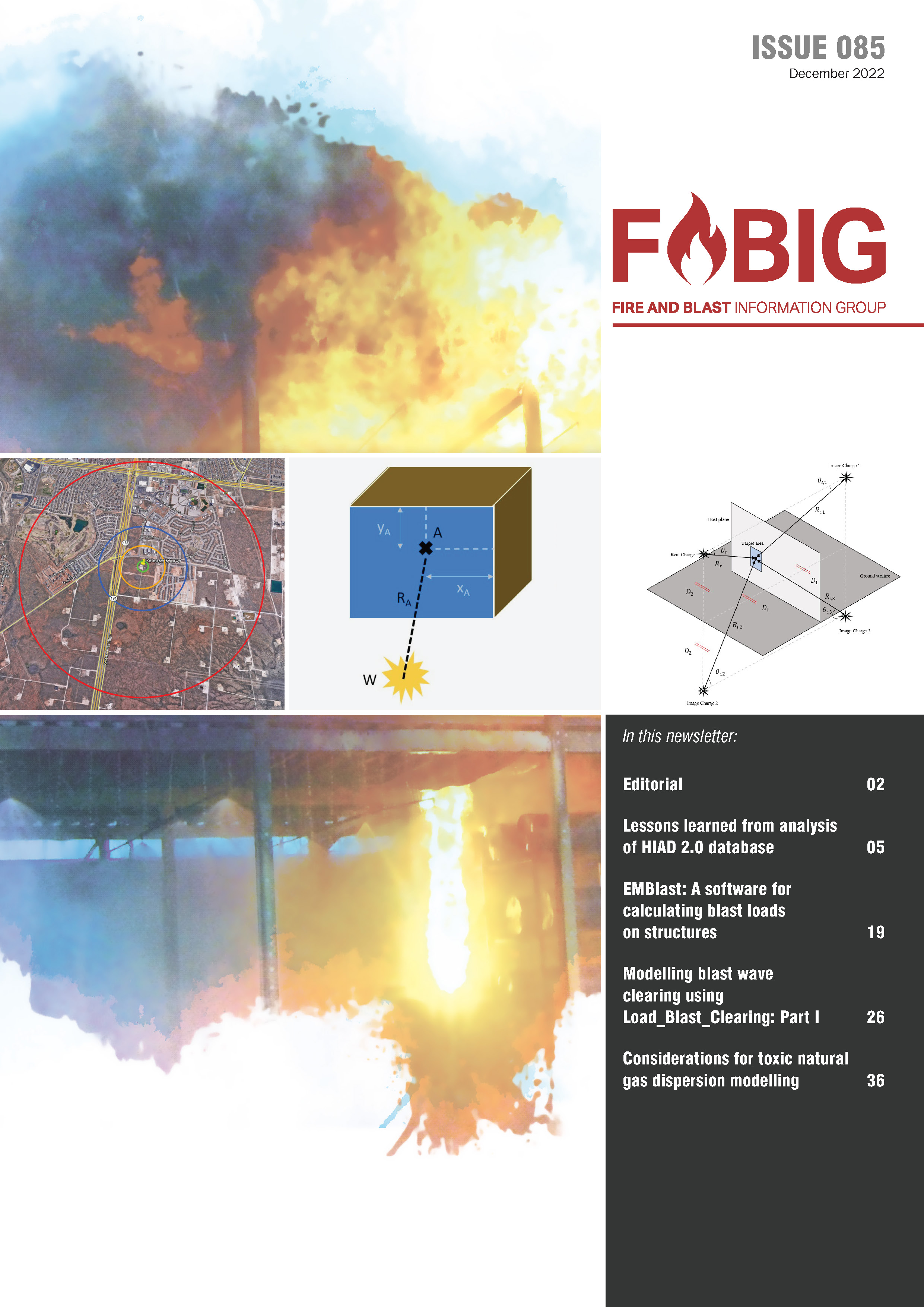Newsletter Issue 085

FABIG Members: Log-in to access all FABIG resources LOG IN
CONTENTS:
This FABIG Newsletter comprises the following:
- Editorial
G. Vannier - The Steel Construction Institute (SCI) - Statistics, lessons learned and recommendations from analysis of HIAD 2.0 database
J.X. Wen1, M. Marono2, P. Moretto3, E.-A. Reinecke4, P. Sathiah5, E. Studer6, E. Vyazmina7 and D. Melideo8 - 1University of Surrey, 2Research Centre for Energy, Environment and Technology (CIEMAT), 3European Commission, Joint Research Centre (JRC), 4ForschungszentrumJuelich GmbH, 5Shell, 6CEA, 7Air Liquide, 8Università di Pisa
This paper provides an overview of the European Hydrogen Incidents and Accidents Database (HIAD 2.0) and describes the processes followed by the authors to derive lessons learned and formulate recommendations. Lessons learned have been categorised according to system design, system manufacturing, installation and modification as well as human factors and emergency response. The recommendations provided consider operational modes, industrial sectors and human factors. - EMBlast: A software for calculating blast loads on structures from the detonation of energetic materials
S.C. Angelides1,2, B.A. Burgan1, C. Kyprianou1, S.E. Rigby2, A. Tyas2 - 1Steel Construction Institute, 2University of Sheffield
Current software for calculating blast loads on structures from the detonation of energetic materials tend to be either complex, expensive CFD software or restricted fast-running software originating from the military and lacking in documentation. This paper presents methods for rapidly and accurately predicting blast loads on structures, which have been implemented in the EMBlast software. This paper particularly focusses on the prediction of free-field and reflected pressure-time histories. - Modelling blast wave clearing using Load_Blast_Clearing: Part I - verification and validation
L. Schwer1, S. Rigby2 and T. Slavik3 - 1Schwer Engineering & Consulting Services, 2University of Sheffield, 3Ansys, Inc.
The implementation of an engineering model of air blast in LS-DYNA, known by the keyword Load_Blast, has been a useful feature. Several improvements were then made under the keyword Load_Blast_Enhanced and more recently, additional improvements have been made via the new keyword Load_Blast_Clearing. This paper introduces the new keyword Load_Blast_Clearing, provides some verification and validation, and explores a novel application involving oblique blast waves. - Consequence assessment considerations for toxic natural gas dispersion modelling
S.R. Nair1, N.O. Ogbeifun1, J.X. Wen2 - 1Chevron, 2University of Surrey
This paper discusses the results from consequence modelling studies performed for a selected set of toxic natural gas release events in relation to onshore pipeline transfer. The study analyses the modelling inputs and parameters, and determines the key release source terms and atmospheric parameters that impact the estimation of hazardous zones.
Non-member price: £75.00
Add to Basket
Published in: December 2022
Keywords:
Statistics / Lessons learned / HIAD 2.0 / Blast loading / EMBlast software / LS-DYNA / Load_Blast_Clearing / Toxic natural gas / Release / Dispersion / Numerical simulation / Sensitivity study
Online purchase options:
Non-Members of FABIG are able to purchase PDF copies of the FABIG Newsletters.